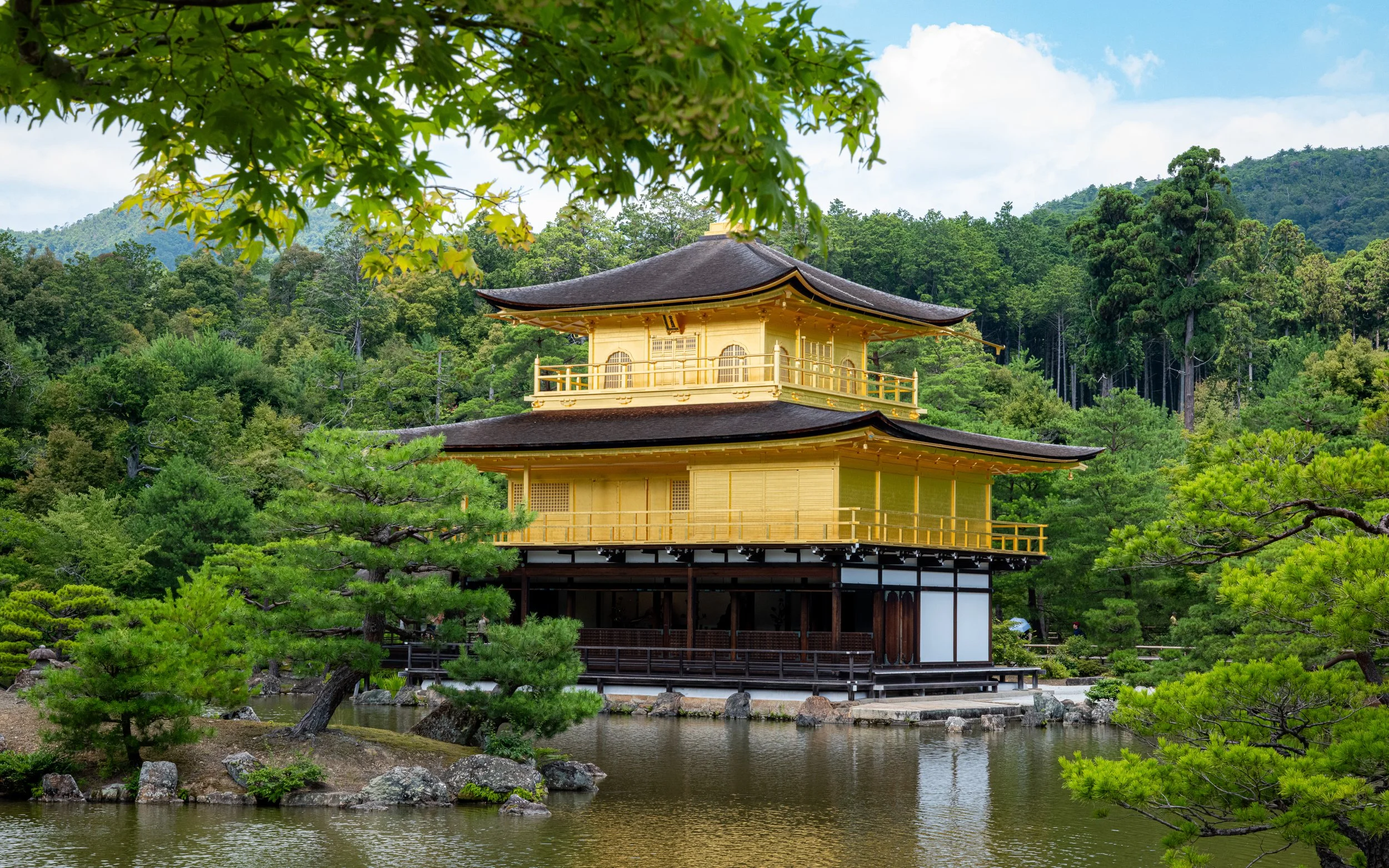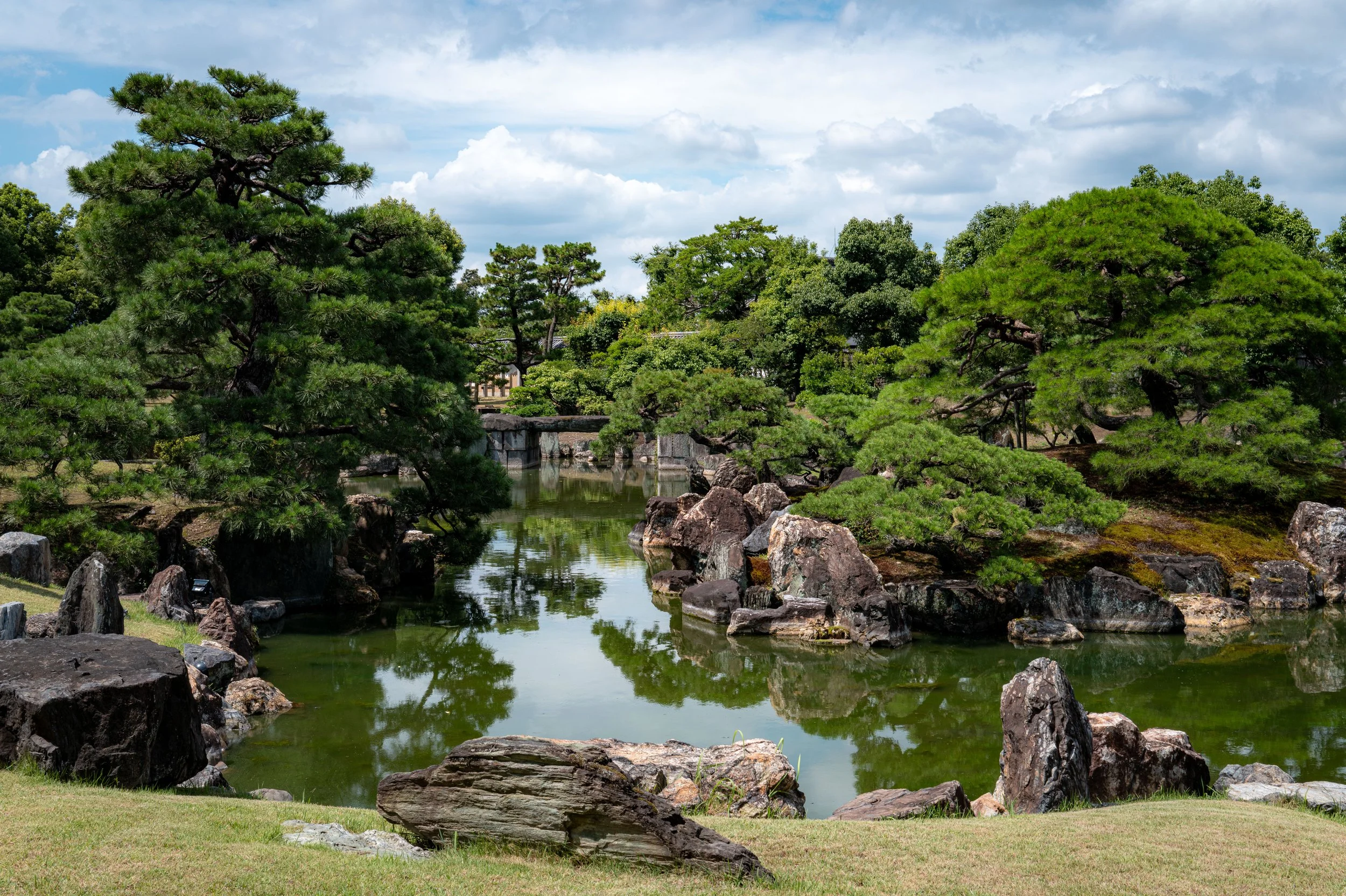Kyoto: Where the Past Lives Quietly in the Present
There are some places that leave a lasting impression on your heart, and for me, Kyoto is one of them. A city where centuries-old temples sit quietly alongside city streets and daily life flows through traditions both old and new, Kyoto offers something more than just beauty—it offers depth. Coming back after many years felt less like a trip and more like a return to something familiar.
Kinkaku-ji: The Golden Palace
Finding Zen around Every Corner
One of the best parts of Kyoto is the abundance of shrines, temples, and gardens. They are everywhere … tucked between buildings, hidden down narrow lanes, or sprawling across temple grounds. Each one seems to ask you to slow down and look a little closer.
I revisited some of the city’s well-known landmarks: the thousand of torii gates at Fushimi Inari, the towering bamboo forest of Arashiyama, and Kinkaku-ji, the Golden Pavilion, gleaming over its reflection pool. Despite the steady stream of visitors, they haven’t lost their sense of stillness. I waited for quiet moments between the crowds, trying to capture photos the reflect the beauty and stillness of these places.
Kiyomizu-dera
One morning, I set out early on a 40-minute walk to Kiyomizu-dera, perched on the eastern hills of Kyoto. I arrived just as the gates opened and the temple welcomed me in near solitude. A few elderly locals moved through a Tai Chi routine on the veranda, framed by the morning light and the city stretched out below. The view from the wooden platform still felt just as awe-inspiring as the first time I saw it.
Gion: Traditions of the Past
Gion remains one of the most atmospheric neighborhoods in Kyoto. Its cobbled streets, wooden teahouses, and preserved geisha quarters have a quiet, lived-in elegance. I joined a walking tour to learn more about geisha and maiko (apprentices), and how these cultural traditions continue through generations of dedicated training and community.
We visited old teahouses and okiya (training homes), some still led by their okā-san, where young women learn the intricacies of music, dance, and formal hospitality. Despite the tourism, Gion still offers moments that feel untouched: a flower shop with no register, just a gesture to a payment jar; a small restaurant serving seasonal dishes with remarkable care.
Garden at Nijo Castle
Nijo Castle: Layers of Power and Precision
One of the more striking places was to Nijo Castle, once home to the Tokugawa shoguns. The exterior is grand, but understated. One you walk inside the elaborate screens, lacquered doors, and silk-covered walls hint at its former power. What stood out most were the nightingale floors, wooden boards designed to creak melodically with every step, as a security measure against intruders.
Outside, the Ninomaru Garden offers a different kind of mastery: one of proportion and quiet design. Every stone, bridge, and pine tree feels purposefully placed … a study in balance.
Gion Matsuri: A Celebration
I didn’t plan my trip around Kyoto’s famous summer festival, Gion Matsuri, but I happened upon it anyway. The city came alive: kids in yukata, paper lanterns glowing at dusk, crowds moving in rhythm with the chanting and drumbeats. Towering Yamaboko floats, intricately carved and decorated, passed through the streets like mobile shrines of craft and history.
There’s something powerful about seeing a city celebrate together, not for tourists, but for tradition. The joy felt genuine, collective, and deeply rooted.
Final Thoughts
Kyoto doesn’t rush to impress. It unfolds gradually. Whether you’re standing in a mossy garden, walking through a silent bamboo grove, staring endlessly at a perfectly sculpted zen garden or pausing at the edge of a temple veranda, the city asks nothing more than your attention.
Coming back reminded me of what made Kyoto feel so special the first time. It’s not just the aesthetics or the landmarks … it’s the mood, the quiet intentionality of the place. Kyoto isn’t a checklist of sights. It’s a place that quietly stays with you, long after you’ve gone.





